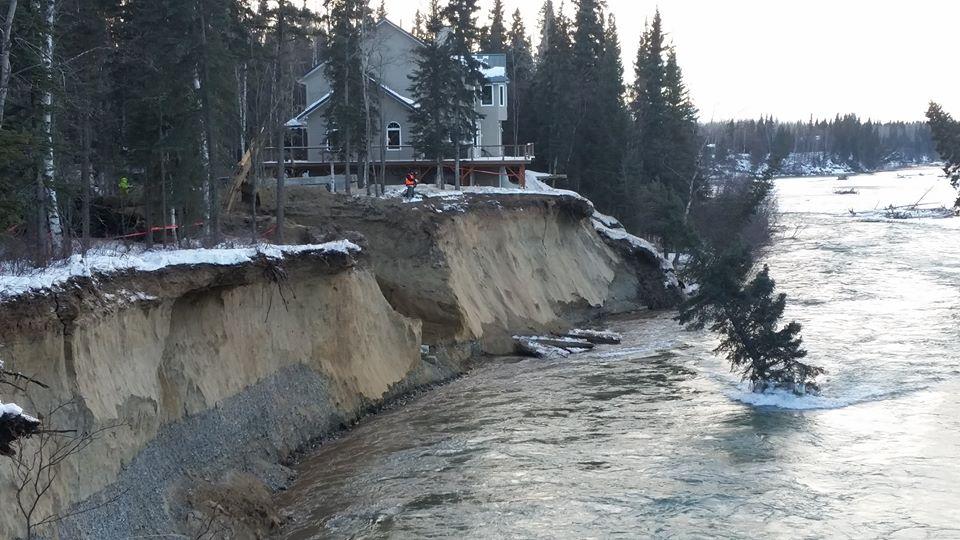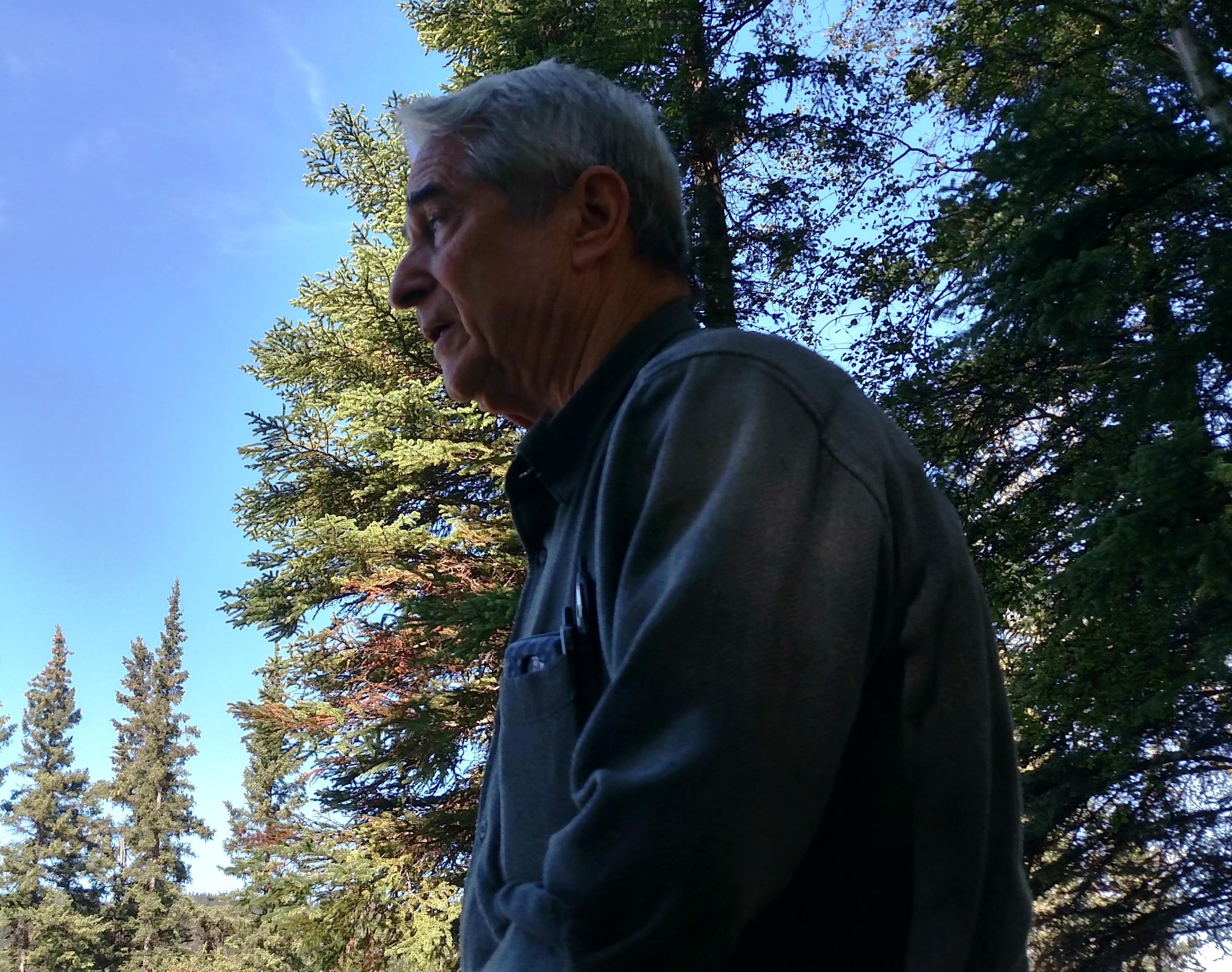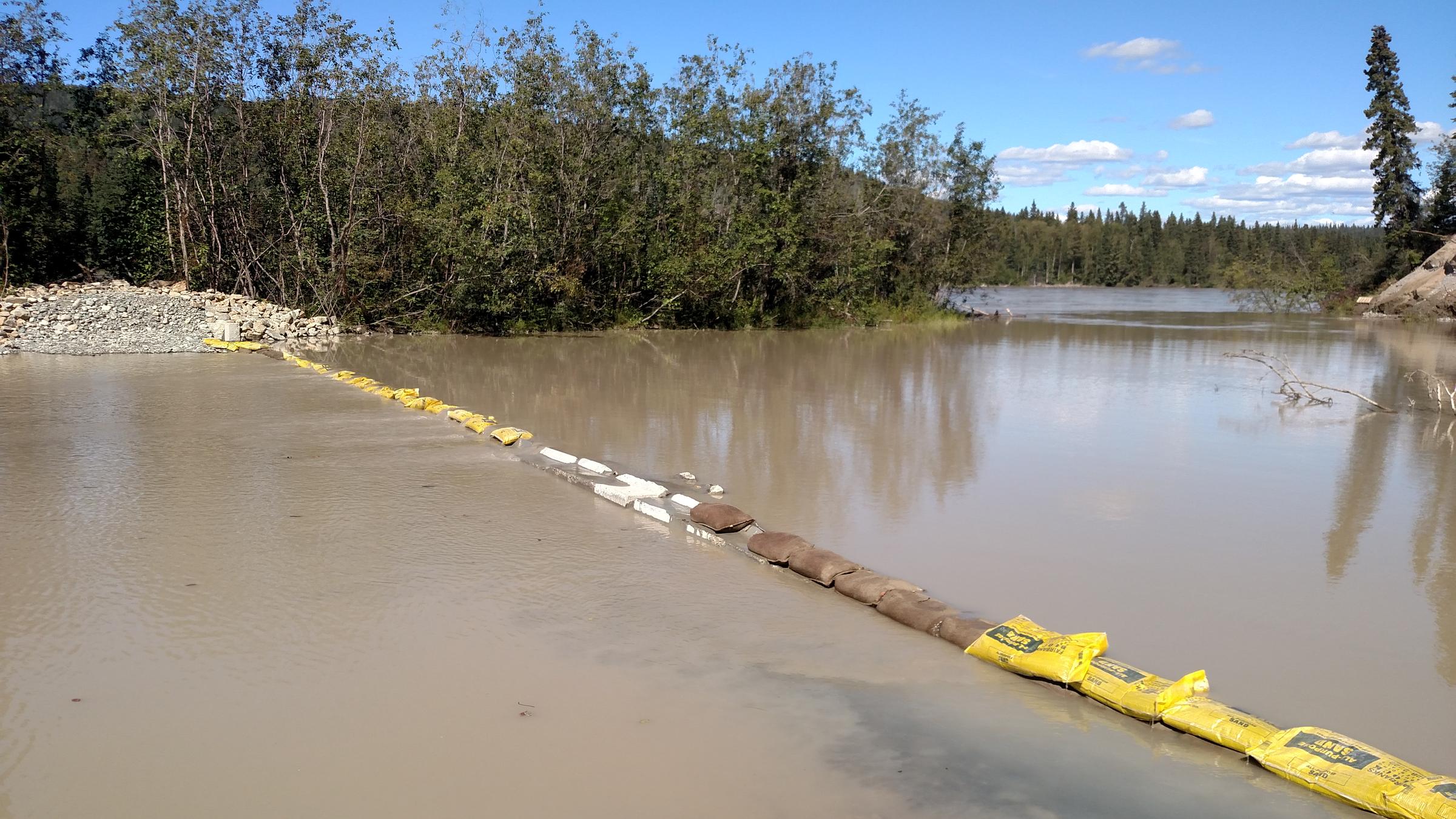Big Delta resident Tom Gorman said a small dam he built earlier this year to protect his home from the meandering Tanana River held steady over the past couple of weeks as the river rose to near-flood level, due to recent rains. Gorman now hopes the river falls quickly enough to allow him to finish work on the dam before snow flies.

Tom Gorman stands at the edge of a 20-foot-wide slough off the Tanana River that runs along the foot of a ridge on which he built his house about seven years ago and said this isn’t how it looked back then.
“Last year, it was dry!” Gorman said.
Gorman said a couple dozen trees used to grow in and around the area, which served as a sort of buffer between his big three-story house and the Tanana River some 45 feet away. Until January, that is, when an ice dam on the Tanana diverted a torrent of water into the area that tore out the trees and gouged into the riverbank, threatening to undercut the ridge where his house sits.
“And that just came in and just took ’em out, one at a time – pow! Two hours later, another one – bam! It just got behind ’em, the erosion behind ’em, and just ripped ’em up,” Gorman said.

That was near the beginning of an ordeal that lasted for several weeks, as Gorman and a small army of friends, neighbors, contractors and others tried to bust up the pile of thick ice slabs. They attempted to melt it with a de-icing solution; they tried to bust it up with a 5,000-pound weight dropped from a helicopter; they even detonated explosives to blast it open. Nothing worked.
“No – well, not on 3-, 4-foot (thick) ice,” Gorman said. “That’s what you had over here, all the way across.”
Gorman said state and federal officials for the most part supported his effort to save the house. He said he didn’t get any help from his homeowner’s insurance company, but he got lots from dozens of volunteers from all around the area.
“The community’s helped me out,” Gorman said, “And they really pulled together.”

(Photo by Tim Ellis, KUAC – Fairbanks)
Gorman is a retiree from Texas, and he said the cost of trying to break the ice jam further strained his finances, which he’d already deeply tapped to buy the land and, in 2009, build a house for his family, which includes his wife and elderly mom, disabled son and daughter with kids.
Gorman said he’s been asked many times: why did he build his dream house so close to the river?
“We were safe,” he said, “we were really safe when we built this house.”
Gorman said he followed advice on where to build given by his contractor and two neighbors, both of whom have lived along that stretch of the river for more than 40 years. But the ice-jam backup surprised everyone, he said as he shows photos of river water tearing through the slough and frantic efforts to slow its destruction.
“It came around this way, and it starts cutting in here,” he said. “It cut in here and fell down. It cut and just headed right toward the house.”

Gorman said when the ice jam finally gave way, he and his had crew a chance to bring in equipment to shore up 150 feet of riverbank with big rocks – and to build an 8-foot-tall dam across the slough.
“What this dam did here was to really stop the current,” Gorman said. “Once the current was stopped, then I could get in here and do something.”
Gorman said when the river rose a couple of weeks ago, he saw that the dam, which is built of interlocking concrete barriers, wasn’t quite high enough. So he laid a course of sandbags on top it to slow the flow to trickle.
“It’s holding,” Gorman said, “but it’s not done. It has to be completed.”
But Gorman said he can’t bring equipment back in until the river drops and the area dries out.
“The water has got to go down, because what happens is you put the equipment down there and it’s so soft that it’s going to push the dam away,” Gorman said.
Gorman said that may not happen before the first snow flies two or three months from now. He said he’d prefer to do the work before winter sets in, but if he runs out of time, he’ll pay the extra cost of doing the work in the winter to save his home.
Tim Ellis is a reporter at KUAC in Fairbanks.




